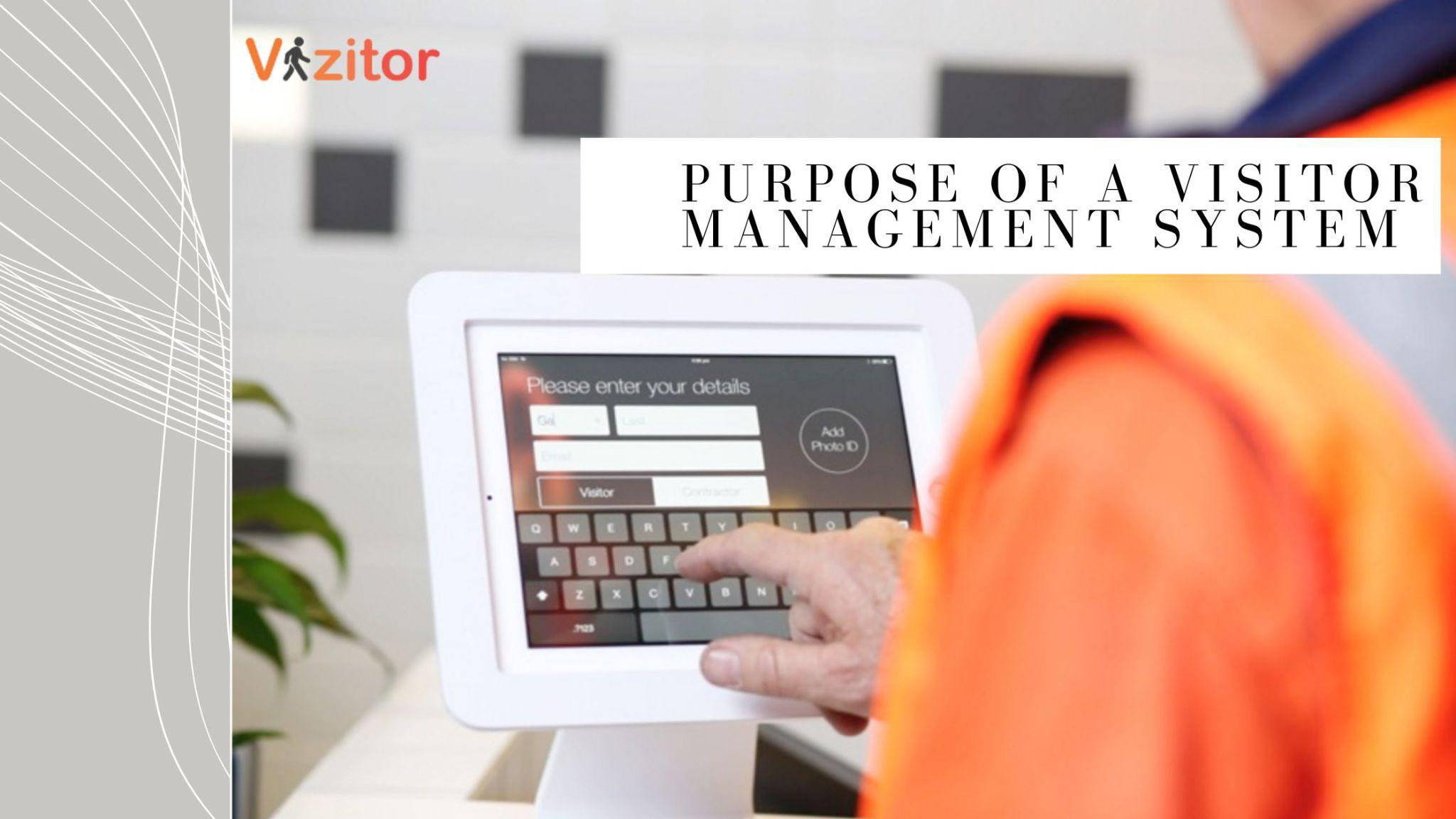Table of Content
Try Vizitor for Free!

Fri, Aug 9, 2024
Read in 16 minutes
Introduction
Did you know that a well-organized workspace can boost productivity by up to 20%?
Workspace optimization is all about arranging and organizing your office to make it more productive, efficient, and comfortable. This includes everything from how desks and chairs are set up to where equipment and lights are placed. A well-optimized workspace helps people work better and feel happier.
Why is workspace optimization important? A tidy and well-planned office can reduce distractions and stress, helping employees focus more on their work. Using space and resources can also save money and create a more team-friendly and energetic work environment. In today’s fast-paced business world, optimising workspace is key to keeping your team productive and motivated.
Whether you’re starting a new office or improving an old one, using workspace optimization strategies can greatly boost both performance and morale.
What Is Workspace Optimization?
Workspace optimization is the process of arranging and organizing an office to make it as productive, efficient, and comfortable as possible. This means setting up desks, chairs, equipment, and lighting in a way that helps employees work better and feel good.
For example, placing desks near windows can provide natural light, which can improve mood and productivity. Using ergonomic chairs and adjustable desks can reduce physical strain and boost comfort. Organizing cables and equipment neatly can prevent clutter and distractions.
Statistics show that a well-optimized workspace can significantly improve performance. According to a study by the American Society of Interior Designers, 68% of employees complain about their office’s lighting. Better lighting can lead to a 15% increase in productivity. Another study by the World Green Building Council found that good indoor air quality can improve productivity by 8-11%.
By making simple changes, like ensuring there is enough natural light, providing comfortable furniture, and keeping the workspace tidy, companies can create an environment where employees can work efficiently and feel happier. This not only improves individual performance but also contributes to the overall success of the business.
Why Is Optimizing Your Office Space Important?
Optimizing your office space is essential for creating a productive and healthy work environment. A well-planned office setup not only boosts efficiency but also enhances employee well-being and satisfaction.
For instance, placing workstations near natural light sources can improve mood and energy levels, leading to higher productivity. Implementing ergonomic furniture, such as adjustable chairs and desks, can reduce physical strain and prevent health issues, resulting in fewer sick days.
Research supports the impact of a well-optimized office. A study by Cornell University found that optimizing office lighting can increase work output by 18%. Another report by the International WELL Building Institute showed that improved indoor air quality can enhance cognitive function by up to 61%. Furthermore, a survey by Steelcase found that 87% of workers feel more engaged in offices with flexible and comfortable spaces.
Examples of optimization include creating quiet zones for focused work, setting up collaborative areas for team projects, and using greenery to improve air quality and aesthetics. These changes not only make the office more pleasant but also support various work styles and needs.
In conclusion, optimizing your office space is vital for fostering a productive, efficient, and happy workforce. Simple adjustments like better lighting, ergonomic furniture, and thoughtful layouts can lead to significant benefits for both employees and the overall business.
How To Optimize Office Layout?
Optimizing your office layout is crucial for creating a productive, efficient, and comfortable work environment. Here’s how you can do it effectively:
1. Open vs. Private Spaces
A study by Harvard Business School found that open offices can reduce face-to-face interactions by 70% and increase email communication by 50%. Balancing open and private spaces can mitigate these effects.
Pros and Cons of Open Office Layouts:
- Pros: Encourage collaboration, improve communication, and save space.
- Cons: Can be noisy, distracting, and reduce privacy.
When to Use Private Spaces:
- For tasks requiring deep focus, confidential meetings, and when employees need a quiet environment.
Balancing Collaboration and Privacy:
- Use a hybrid model with open areas for teamwork and private rooms or booths for focused work. For example, Google’s offices have open spaces for collaboration but also provide quiet rooms for individual work.
2. Ergonomic Furniture
According to the Occupational Safety and Health Administration (OSHA), ergonomic workstations can reduce musculoskeletal disorders by 60%. Companies like Microsoft provide ergonomic furniture to enhance employee well-being.
Importance of Ergonomic Furniture:
- Prevents physical strain, reduces the risk of musculoskeletal disorders, and increases comfort and productivity.
Tips for Selecting Ergonomic Chairs and Desks:
- Choose chairs with adjustable height, lumbar support, and armrests.
- Desks should allow for both sitting and standing positions.
Positioning Monitors and Keyboards to Reduce Strain:
- Monitors should be at eye level and about 20 inches away from the face.
- Keyboards should be placed so that elbows are at a 90-degree angle to avoid wrist strain.
3. Workflow Efficiency
The Journal of Environmental Psychology states that well-designed office layouts can increase productivity by 15%. An efficient layout at Pixar’s offices encourages spontaneous meetings and creative discussions.
Designing the Office Layout for Efficient Workflow:
- Arrange workstations to minimize movement and streamline processes.
Placement of Equipment and Supplies:
- Keep frequently used items within easy reach.
- Place printers, copiers, and other shared equipment in central locations.
Minimizing Distractions and Interruptions:
- Use partitions or screens to create visual barriers.
- Designate quiet zones where conversations and noise are limited.
How To Implement Technology Solutions
Implementing the following technology solutions can significantly enhance your office’s efficiency, productivity, and security. By integrating the right tools and systems, you can create a more connected and streamlined work environment.
1. Communication Tools
Best Tools for Internal Communication:
- Slack: Ideal for team messaging, file sharing, and delivery management.
- Microsoft Teams: Combines chat, video conferencing, and file storage in one platform.
- Zoom: Popular for video meetings and webinars, offering high-quality video and screen sharing.
Integrating Email, Messaging Apps, and Video Conferencing:
- Unified communication platforms like Microsoft Teams and Google Workspace integrate email, messaging, and video conferencing into a single interface. This integration helps streamline communication and reduce the need to switch between different tools.
Benefits of Unified Communication Platforms:
- Improved collaboration by centralizing communication.
- Increased productivity as team members spend less time managing multiple tools.
- Enhanced tracking of conversations and project progress.
2. Automation and AI
How Automation Can Streamline Tasks:
- Automation tools can handle repetitive tasks such as scheduling meetings, processing invoices, and managing customer queries. This frees up time for employees to focus on more strategic work.
Examples of AI Tools That Boost Productivity:
- Zapier: Connects various apps to automate workflows, such as automatically saving email attachments to cloud storage.
- Grammarly: Uses AI to improve writing by checking for grammar and style issues.
- Chatbots: Handle customer service inquiries and provide 24/7 support.
Implementing Automation in Everyday Office Tasks:
- Start by identifying repetitive tasks that can be automated. Implement tools like automated email responders or workflow automation platforms to streamline these processes.
3. Document Management Systems
Benefits of Digital Document Management:
- Reduces physical storage needs.
- Improves accessibility and collaboration by allowing multiple users to access and edit documents simultaneously.
- Enhances document security with digital access controls.
Tips for Choosing the Right Document Management System:
- Look for features like easy file search, version control, and integration with other tools.
- Consider scalability to accommodate future growth and additional users.
Ensuring Data Security and Easy Access:
- Choose a system with robust security features such as encryption and access controls.
- Ensure the system supports backups and disaster recovery to prevent data loss.
How To Create a Positive Work Culture
By focusing on collaboration, employee well-being, and recognition, you can build a positive work culture that enhances both individual satisfaction and team performance.
1. Encourage Collaboration
Creating a Collaborative Environment:
- Foster an atmosphere where team members feel comfortable sharing ideas and working together. Open office layouts and shared workspaces can enhance communication and cooperation.
Tools and Techniques to Promote Teamwork:
- Utilize collaboration tools like Slack for instant messaging, Trello for project management, and Microsoft Teams for video meetings. Implement techniques like cross-functional teams and collaborative problem-solving sessions to enhance teamwork.
Benefits of Regular Team Meetings and Brainstorming Sessions:
- Regular team meetings ensure everyone is aligned with project goals and deadlines. Brainstorming sessions encourage creativity and collective problem-solving, leading to more innovative solutions and a stronger team bond.
2. Employee Well-being
Importance of Mental and Physical Health in the Workplace:
- Mental and physical health significantly impact employee productivity, satisfaction, and retention. A healthy work environment reduces stress and prevents burnout, contributing to overall job satisfaction.
Initiatives to Support Employee Well-being:
- Implement wellness programs that include mental health resources, fitness activities, and healthy eating options. Provide access to counseling services and promote work-life balance through supportive policies.
Benefits of Flexible Working Hours and Remote Work Options:
- Flexible hours and remote work options allow employees to manage their work and personal lives better, leading to increased job satisfaction and productivity. According to a report by Buffer, 32% of remote workers say that flexible schedules are the biggest benefit of remote work.
3. Recognition and Rewards
Methods to Recognize and Reward Employees:
- Use a mix of formal and informal recognition methods, such as employee of the month awards, shout-outs during meetings, and personalized thank-you notes. Offer tangible rewards like bonuses, gift cards, or additional time off.
Impact of Appreciation on Employee Motivation:
- Regular appreciation boosts employee morale and motivation, leading to increased engagement and productivity. A study by Gallup found that employees who receive regular recognition are more likely to stay with their company and contribute positively.
Creating a Structured Recognition Program:
- Develop a clear program that outlines how and when employees will be recognized. Include criteria for awards and a process for nominations. Ensure the program is transparent and inclusive, allowing all employees to be acknowledged.
How To Improve Office Environment?
Improving your office environment by focusing on natural lighting, effective decor, and cleanliness can significantly enhance employee satisfaction, health, and productivity. Implementing these strategies helps create a workspace that supports well-being and efficiency**.**
1. Natural Lighting and Ventilation
Importance of Natural Light in the Office:
- Natural light is crucial for creating a pleasant and productive work environment. It helps regulate the body’s circadian rhythms, improves mood, and enhances overall well-being. According to a study by the Lighting Research Center, employees with access to natural light reported a 51% decrease in eyestrain and headaches.
Tips for Improving Lighting and Ventilation:
- Position workstations near windows to maximize natural light. Use adjustable blinds to control glare and direct light where needed.
- Incorporate energy-efficient LED lighting to complement natural light and reduce eye strain.
- Ensure proper ventilation by using air purifiers and maintaining regular HVAC system checks. Open windows periodically to refresh the indoor air.
Impact on Employee Health and Productivity:
- Improved lighting and ventilation lead to better sleep, reduced stress, and increased energy levels, which translate to higher productivity. Employees in well-lit environments are 20% more productive, as reported by the National Institute for Occupational Safety and Health (NIOSH).
2. Office Decor and Ambiance
Designing an Aesthetically Pleasing Office:
- Create a visually appealing office by incorporating modern and comfortable furniture, attractive artwork, and a cohesive design theme. A well-designed space can make employees feel more engaged and motivated.
Color Schemes and Their Effects on Mood:
- Use colors that promote productivity and well-being. For instance, blue tones can enhance concentration and calm, while green shades are known for reducing stress and increasing creativity. A study by the Institute for Color Research found that color can increase brand recognition by up to 80%.
Incorporating Plants and Natural Elements:
- Add indoor plants and natural elements to improve air quality and create a calming atmosphere. Plants like snake plants and pothos are low-maintenance options that can also boost mood and productivity. The Human Spaces report indicates that incorporating biophilic design elements can improve employee well-being by 15%.
3. Clean and Organized Space
Benefits of a Clean and Organized Office:
- A tidy office reduces stress, minimizes distractions, and increases efficiency. According to a study by the National Association of Professional Organizers, 77% of workers feel more productive in a clean workspace.
Tips for Maintaining Cleanliness and Order:
- Implement regular cleaning schedules and ensure all areas are kept neat and organized. Use storage solutions to keep supplies and documents in order.
- Encourage decluttering by providing adequate storage and promoting a “clean desk” policy.
Encouraging Employees to Keep Their Workspaces Tidy:
- Foster a culture of cleanliness by setting a good example and providing organizational tools. Offer incentives or recognition for maintaining an orderly workspace.
Training and Development For A Good Office Space
By investing in continuous learning and leadership training, you can cultivate a well-skilled and motivated workforce that contributes to a positive and productive office environment.
1. Continuous Learning Opportunities
Importance of Ongoing Training:
- Continuous learning is essential for keeping employees’ skills up-to-date and relevant. It helps staff adapt to new technologies, industry trends, and changing job requirements. Regular training can boost employee engagement and job satisfaction, leading to higher productivity and lower turnover rates. According to a report by LinkedIn Learning, companies that offer ongoing learning opportunities see a 50% higher employee retention rate.
Creating a Learning Culture in the Office:
- Foster a culture of learning by encouraging curiosity and knowledge sharing. Promote a growth mindset where employees are motivated to learn and improve. Establish a mentorship program where experienced employees can guide newer team members, and encourage regular knowledge-sharing sessions and workshops.
Providing Resources for Skill Development:
- Offer access to online courses, industry certifications, and professional development workshops. Provide tools like learning management systems (LMS) that allow employees to track their progress and access training materials. Encourage participation in webinars and conferences to broaden their knowledge.
2. Leadership Training
Importance of Strong Leadership:
- Effective leadership is crucial for guiding teams, making strategic decisions, and driving organizational success. Strong leaders inspire and motivate their teams, set clear goals, and handle conflicts efficiently. According to a study by Gallup, managers account for at least 70% of the variance in employee engagement scores, highlighting the importance of good leadership.
Offering Leadership Development Programs:
- Implement programs that focus on key leadership skills such as communication, decision-making, and conflict resolution. Provide training workshops, leadership coaching, and opportunities for leaders to take on challenging projects. Encourage participation in leadership forums and networking events.
Impact of Effective Leadership on Office Efficiency:
- Good leadership can significantly enhance office efficiency by setting clear expectations, fostering a positive work environment, and facilitating effective teamwork. Effective leaders create a sense of purpose and direction, which leads to better performance and higher employee morale. A study by the Center for Creative Leadership found that companies with strong leadership development programs saw a 24% increase in employee performance.
How To Monitor and Evaluate For An Optimized Workplace
1. Setting Key Performance Indicators (KPIs)
Importance of KPIs in Measuring Efficiency:
- Key Performance Indicators (KPIs) are crucial for assessing the effectiveness of workplace strategies and operations. They provide quantifiable metrics that help gauge how well different aspects of the workplace are performing. Monitoring KPIs allows organizations to identify areas for improvement and ensure that goals are being met efficiently. For instance, according to a report by the International Journal of Productivity and Performance Management, businesses that use KPIs effectively see a 20-30% improvement in productivity.
Examples of Relevant KPIs for Office Environments:
- Employee Productivity: Measures output relative to time or resources. Example: tasks completed per hour.
- Employee Satisfaction: Gauged through surveys and feedback. Example: satisfaction scores from annual employee surveys.
- Office Utilization Rate: Measures how effectively office space is used. Example: percentage of workspace occupied versus available.
- Attendance and Punctuality: Tracks the consistency of employee attendance and timeliness. Example: number of days employees are late or absent.
Regularly Reviewing and Adjusting KPIs:
- KPIs should be reviewed periodically to ensure they remain relevant and aligned with organizational goals. Regular evaluations help identify trends and adjust strategies as needed. For instance, a quarterly review can help address any emerging issues and refine KPIs to better reflect changing business needs.
2. Gathering Employee Feedback
Methods for Collecting Feedback from Employees:
- Surveys and Questionnaires: Use anonymous surveys to gather honest feedback on various aspects of the workplace.
- One-on-One Meetings: Conduct regular meetings with employees to discuss their concerns and suggestions.
- Suggestion Boxes: Provide a physical or digital suggestion box for employees to submit ideas or issues anonymously.
Importance of Acting on Feedback:
- Acting on employee feedback demonstrates that the organization values their input and is committed to making improvements. This can enhance employee satisfaction and engagement. According to a survey by Gallup, companies that act on employee feedback experience a 14.9% decrease in employee turnover.
Creating a Culture of Open Communication:
- Foster an environment where employees feel comfortable sharing their thoughts and concerns. Encourage transparency and provide regular updates on how feedback is being used to make changes. Recognize and address feedback promptly to build trust and ensure that employees feel heard and valued.
How Does Vizitor Help With Workspace Optimization?
Vizitor is an advanced visitor management system designed to enhance workspace optimization by improving efficiency, security, and overall management of office environments. Here’s how Vizitor contributes to workspace optimization:
1. Streamlined Visitor Management
Efficient Check-In and Check-Out:
- Vizitor simplifies the check-in and check-out process for visitors through digital kiosks or mobile apps. This reduces waiting times and streamlines the flow of visitors in the office, allowing staff to focus on their tasks.
Pre-Registration:
- Visitors can pre-register before arriving, which speeds up the check-in process and ensures that all necessary information is collected in advance. This helps in reducing administrative workload and improving visitor experience.
2. Enhanced Security
Real-Time Notifications:
- The system sends real-time notifications to hosts when their visitors arrive, ensuring timely reception and minimizing potential security breaches. This helps in maintaining a secure environment by keeping track of all visitors.
Access Control Integration:
- Vizitor integrates with existing access control systems to ensure that only authorized visitors can access certain areas. This integration enhances security by restricting access to sensitive areas based on visitor credentials.
3. Data Analytics and Reporting
Visitor Analytics:
- Vizitor provides detailed reports and analytics on visitor patterns, such as peak visiting hours and frequent visitors. This data helps organizations optimize space usage, adjust staffing levels, and plan for future space requirements.
Resource Allocation:
- By analyzing visitor data, organizations can better allocate resources, such as reception staff and meeting rooms, to ensure efficient use of office space.
4. Improved Workspace Utilization
Meeting Room Management:
- Vizitor can integrate with meeting room booking systems to ensure that meeting spaces are utilized effectively. It helps in managing room availability and booking conflicts, leading to more efficient use of office resources.
Space Optimization:
- Insights from visitor data can inform decisions on office layout and design. For example, if certain areas are underused, organizations can reconfigure office space to better meet the needs of employees and visitors.
5. Enhanced User Experience
Contactless Experience:
- Vizitor offers contactless check-in options through QR codes or mobile apps, reducing physical contact and enhancing the overall visitor experience. This is particularly beneficial in maintaining hygiene and safety standards.
Customizable Solutions:
- The system can be customized to fit specific organizational needs, such as branding, visitor types, and check-in processes. This flexibility ensures that the system integrates smoothly with existing office workflows.









